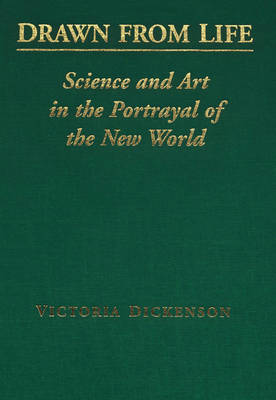
- Afhalen na 1 uur in een winkel met voorraad
- Gratis thuislevering in België vanaf € 30
- Ruim aanbod met 7 miljoen producten
- Afhalen na 1 uur in een winkel met voorraad
- Gratis thuislevering in België vanaf € 30
- Ruim aanbod met 7 miljoen producten
Drawn from Life
Science and Art in the Portrayal of the New World
Victoria DickensonOmschrijving
The use of images as evidence in historical writing has been largely neglected by historians, though recent interest in the importance of visualization in scientific literature has led to a reappraisal of their value. In Drawn from Life, Victoria Dickenson uncovers a vast pictorial tradition of 'scientific illustration' that reveals how artists and writers, from the late sixteenth to the early nineteenth century portrayed the natural history and landscape of North America to European readers.
Dickenson undertakes a close reading of the images created by European artists, most of whom had never seen North America, and unravels the threads that linked the images to the curiosities and specimens that reached the Old World. Drawing on a wide range of illustrations - woodblock prints, engravings, watercolours, and maps - she examines several important issues regarding the nature of imagery: the tension between naturalistic representation and stylistic conventionalism; the role of the medium used in creating the image (especially the rise of printmaking); the historically changing function of images; and the need to consider historical context in 'reading' such pictures.
While many contemporary artists claimed that their work was 'drawn from life, ' their images were, in fact, also works of the imagination. Drawn from Life is an illustrated archaeology of the imagination that allows readers to see North America as Cartier, Champlain, and early naturalists perceived.
Specificaties
Betrokkenen
- Auteur(s):
- Uitgeverij:
Inhoud
- Aantal bladzijden:
- 312
- Taal:
- Engels
Eigenschappen
- Productcode (EAN):
- 9780802080738
- Verschijningsdatum:
- 12/12/1998
- Uitvoering:
- Paperback
- Formaat:
- Trade paperback (VS)
- Afmetingen:
- 172 mm x 247 mm
- Gewicht:
- 762 g

Alleen bij Standaard Boekhandel
Beoordelingen
We publiceren alleen reviews die voldoen aan de voorwaarden voor reviews. Bekijk onze voorwaarden voor reviews.











